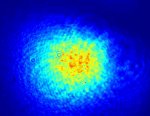- Joined
- Oct 30, 2010
- Messages
- 43
- Points
- 0
Okay im sitting here doing my home work and im just really happy i finished this question its truely tough for me... im in high school but its a great question involving lasers. Here it is.
A very thin sheet of plastic ( n = 1.60 ) covers one slit of a double slit apperatus illuminated by a 640 nm light. The center point on the screen, instead of being a maximum, is dark. What is the (minimum) thickness of the plastic?
The answer is 533 nm
Anyone here think they can do this its a really good question.
A very thin sheet of plastic ( n = 1.60 ) covers one slit of a double slit apperatus illuminated by a 640 nm light. The center point on the screen, instead of being a maximum, is dark. What is the (minimum) thickness of the plastic?
The answer is 533 nm
Anyone here think they can do this its a really good question.






